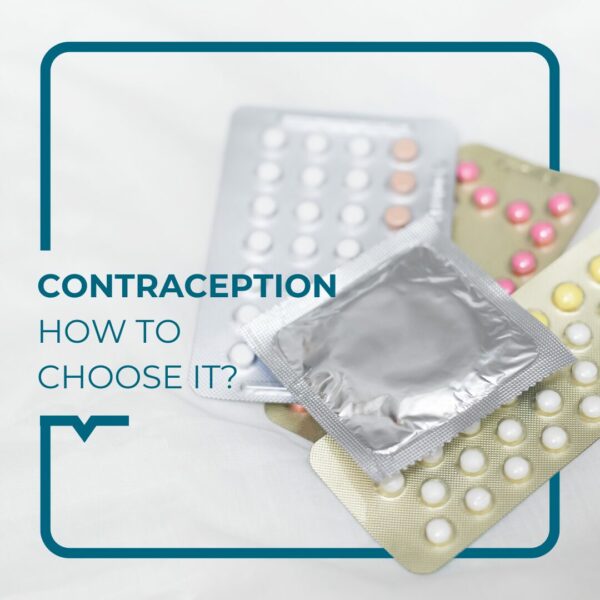Ola, this is Dr Joy! Today I’d like to talk to you about an area of the body that is often neglected: the perineum and, more specifically, perineal rehabilitation.
It plays an essential role in our overall health, especially for women. Unfortunately, it is often underestimated and little understood.
So, in this article, I’d like to enlighten and inform you. To highlight the importance of perineal re-education. Whether you’re young or old, active or sedentary, the health of your perineum deserves special attention.
Let’s find out together what perineal rehabilitation involves and how it can have a positive impact on your quality of life.
Let’s gooooooo!
What is perineal rehabilitation?
The perineum, this hammock-shaped group of muscles, lies at the base of the pelvis and supports vital organs such as the bladder, uterus, and rectum. It also plays a crucial role in urinary and fecal control, as well as sexual pleasure. Important for both men and women, however, the perineum can be weakened by various factors such as childbirth, ageing, prostate problems or even obesity. That’s where perineal rehabilitation comes in.
This is a non-invasive therapeutic approach aimed at strengthening and rehabilitating the muscles of the perineum. It is based on specific exercises designed to restore muscle tone, endurance, and coordination of the perineum.
Perineal rehabilitation can be carried out under the supervision of a qualified health professional, such as a physiotherapist specializing in pelvic rehabilitation.
Why rehabilitate the perineum ?
Rehabilitating the perineum is much more than just a medical concept. It’s a proactive approach to maintaining and improving health and well-being. Toned, well-coordinated perineal muscles help to prevent urinary and fecal incontinence, maintain a fulfilling sexuality, and promote a feeling of comfort in the pelvic region.
Basically, rehabilitation of the perineum offers the possibility of a better quality of life.
When should perineal rehabilitation be recommended ?
There are various reasons for having perineal re-education.
These are 5 of them:
- In cases of urinary and fecal incontinence
Urinary and fecal incontinence can have a significant impact on quality of life, causing both physical and emotional discomfort.
Rehabilitation of the perineum is particularly effective in strengthening the perineal muscles responsible for controlling urinary and fecal functions. Targeted exercises aim to improve muscle tone, strengthen weakened muscles, and restore optimal coordination between these muscles and other pelvic structures. This can reduce or even eliminate bladder or fecal weakness, restoring confidence and independence.
- During pregnancy and post-partum
Pregnancy and childbirth can lead to overstretching the perineal muscles, which can weaken their function. Rehabilitation of the perineum after childbirth is crucial to promote recovery and readaptation of the perineal muscles. Rehabilitation exercises focus on restoring muscle strength and endurance, while promoting healing of damaged tissue. By strengthening the perineum, women can prevent later problems such as incontinence and prolapse (descent of the pelvic organs).
Training sessions can start from 34 weeks of pregnancy to prepare the pelvic floor for childbirth and work on breathing.
- In case of prostate problems
Men can also benefit from perineal rehabilitation, particularly after prostate surgery such as prostatectomy. These procedures can weaken the pelvic floor muscles, sometimes causing urinary incontinence. Rehabilitation of the perineum helps to strengthen these muscles, improve control, and reduce urine leakage. It can also help prevent long-term complications associated with altered urinary function.
Your physiotherapist may also suggest starting before the operation in order to prepare you for it.
- In Menopause
The menopause produces hormonal changes that can weaken the muscles of the perineum. The reduction in estrogen levels can contribute to a loss of muscle tone and a reduction in the elasticity of pelvic tissues. Rehabilitation of the perineum can help maintain muscle strength and flexibility, thereby minimizing the risk of incontinence and prolapse. It can also help maintain a satisfying sex life by preserving sensitivity and blood circulation in the pelvic region.
- In case of enuresis in children
Nocturnal enuresis, commonly known as “bedwetting”, is a common disorder in children, manifested by urinary incontinence during sleep, mainly at night. This problem can have several causes, such as a lack of bladder maturity, sleeping too deeply, a urinary malformation or psychological factors. It is essential to note that nocturnal enuresis is common in children.
Perineal rehabilitation is a recommended approach to treating nocturnal enuresis in children. It aims to strengthen the pelvic floor muscles, and to help the child become more aware of his or her bladder and urinary system. This can have a positive impact on bladder control and reduce night-time urinary accidents.
Perineal rehabilitation sessions initially involve a discussion with the child and parents to better understand the underlying causes and re-establish good habits, such as stopping drinking three hours before bedtime, avoiding salt and going to the toilet before bed. Exercises using games are used by the physiotherapist to strengthen the pelvic floor muscles. Abdominal ultrasound enables the child to understand what is happening in his or her body when a particular muscle is contracted.
In some cases, transcutaneous electrostimulation of the tibial nerve (TTNS) can be used. This technique sends light, painless electrical impulses through the ankle to the tibial nerve, which is directly linked to the sacral plexus, responsible for controlling the urinary system. This can inhibit neurological bladder reflexes (detrusor reflex) by sending signals to the cerebral cortex.
For children aged 5 and over, sessions last an average of 20 minutes. No probes are used, and parents remain in the room throughout the session.
Perineal rehabilitation is only part of the overall treatment of nocturnal enuresis in children. A multidisciplinary approach may be required, including counselling, lifestyle modifications and sometimes medication, to successfully treat this disorder.
How does perineal rehabilitation work?
Rehabilitation of the perineum can be performed by a specialist health professional, such as a physiotherapist. Methods can vary, from muscle contraction and relaxation exercises to biofeedback (biological feedback) to improve body awareness.
At Alegria, our physiotherapist proceeds as follows:
The 1st appointment lasts one hour. The physiotherapist interviews the patient to understand the reason for consultation, obstetric history, family history, lifestyle (work, sporting activity, etc.).
This is followed by an assessment of the pelvic floor and abdominal girdle. The assessment is completed by a functional ultrasound scan, with which the patient can become aware of the different contractions of his pelvic muscles.
Finally, our physiotherapist defines a treatment plan that may include biofeedback, electrostimulation, exercises on an unstable platform, exercises on the Wii, etc.
Each treatment is personalized.
3 exercises to rehabilitate the perineum
If you’d like to start rehabilitating your perineum at home, here are 3 exercises you can do on your own.
- Exercise 1
Standing with your feet flat on the floor, arms by your sides and legs together, inhale, then contract your perineum as you exhale for 10 seconds. Relax for 20 seconds, then contract again for 10 seconds.
Do a series of 10 contractions.
- Exercise 2
Lie on your back with your arms by your sides, your legs bent and your feet on the floor so that your back is flat against the ground. If necessary, place a cushion under your lower back for better support.
Do this exercise with your buttocks off the ground, keeping your upper back and feet flat on the floor: Inhale, then contract your perineum by exhaling for 10 seconds, relax for 20 seconds, then contract again.
Do a series of 10 contractions.
- Exercise 3
In the same starting position, take a deep breath and then exhale slowly while contracting your perineum. Hold your breath while drawing in your stomach and inflating your chest. Hold for 10 seconds, then relax for 20 seconds.
Do a series of 10 contractions.
Rehabilitation of the perineum is a preventive approach to physical well-being. Feel free to explore these simple exercises to stimulate and strengthen your perineum.
We’ve come to the end of this article.
Kisses,
See you,
Dr Joy!
Sources :
Hopitaux Universitaires de Genève — Exercices pour la rééducation périnéale
Ameli — Après l’accouchement
CHU de Dijon — Rééducation Périnéale
This information is not a substitute for medical advice.
You must seek the advice of your doctor or another qualified health professional with any questions you may have regarding your health condition.



